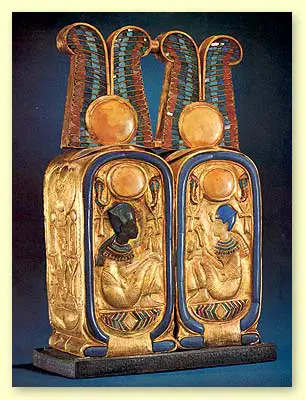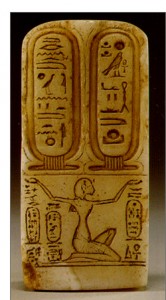The word ‘cartouche’ was first applied to the cartouche symbol by the French soldiers who were part of the 1798 military campaign led by Napoleon Bonaparte into Egypt. The Egyptian name for the cartouche (Egypt Cartouche), shenu, is derived from the same verb, “sheni” (to encircle), as the shen ring.
Hieroglyphics of Egypt Cartouche

It was during the fourth dynasty that Cartouche hieroglyphics were introduced into Egyptian society when they were instituted by King Snerfu. The Egyptians did not refer to these ancient Egyptian hieroglyphics as cartouche but shenu. this name was given to the royal nameplates by Napoleon’s soldiers.
In the early days of ancient Egypt, a cartouche was attached to the coffins of kings and queens.
The cartouche clearly had solar symbology. It originally represented everything that was encircled by the sun — the king’s realm.
The circular shen sign or ring evokes the concept of eternity through its form, having no beginning or end, and its solar aspect is symbolized by the sun disk often depicted in the center of the circle. It was also a symbol of protection, and as a hieroglyphic symbol in Egyptian art, it can have the meanings of both “eternity” and “protection”.
The Egypt Cartouche was also a protective symbol for the king. In the Eighteenth Dynasty, royal sarcophagi were constructed in the shape of the cartouche. As time went on, many people hired an artist to create a cartouche for their own coffins.

One of the most famous discoveries containing cartouche hieroglyphics is the Rosetta stone, which was discovered in 1799. The Rosetta stone is dedicated to Ptolemy V and also contains the king’s cartouche.
In the tomb of the Pharaoh Tuthmosis III, in the Valley of the Kings, the entire burial chamber, as well as the sarcophagus, was constructed in the form of a cartouche. The protective significance of the cartouche symbol was also used when creating ancient Egyptian jewelry.